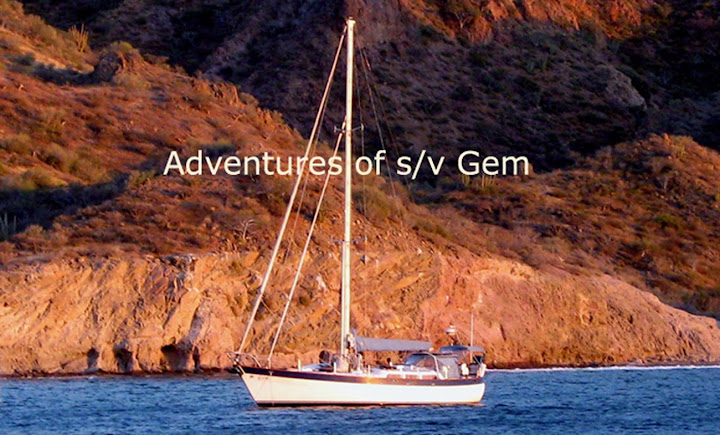I was captivated by Santa Rosalia. It wasn’t like any other town we visited in our entire time in Mexico. The town was made by a French mining company called El Boleo. Bolitos are little balls here being composed of copper ore that were mined and smelted. Much of it was taken all the way to Tacoma, Washington to be processed. From there, timber would be loaded back into the boats and brought back to Santa Rosalia. In exchange for tax exemption, the French promised to build a town and port.
The result was a town of French Provincial architecture meticulously outlined and adapted to the landscape which is very unlike any other town in Mexico. To me, it feels like living in a ghost town in another place and time. The mine closed in 1954 due to depletion of the mine and the federal government took over supplying employment for the town. It operated for a total of 53 years.
After spending a week here, we have more we wanted to say about Santa Rosalia...
Sleuthing Around in Santa Rosalia
The first thing that was odd on our entrance to Santa Rosalia was the enormous grave yard. When you enter the little harbor, greeting you from up on top of the mountain, is a very large white cross. Miles and Miles behind that are burial head stones in a cemetery that goes way back into the valley. Now mind you, this is a small town. So how could you explain a huge cemetery for such a small town?
The second odd thing was that if the French built and occupied this city for 53 years, why is there no trace of them anywhere except for the buildings they left behind? Oh yes, there is one white bust of a French man in one of the small main plazas. But it hasn’t a name or a reference or any explanation of who the man was or what he did. There’s even a small museum with no reference of any French people or those in charge of the mining operation, how they lived, what they did, nothing.
The third odd thing was that the outsides of all these houses are made of beautiful wood from the Northwest of the United States. Why go all the way there to process the minerals and come back with wood? Why didn’t they just process the ore right here in Mexico? Why would they take it to the far ends of a neighboring country?
Photo: The old San Francisco hotel on the left, the ore processing mill in the foreground, on the right a tunnel leading to miles and miles of underground mining tunnels, and cut off on the far right is a large pile of tailings. Not nearly enough for 53 years of work. Most of the tailings are in Tacoma, WA.
You won’t find the answers here in Mexico. But searching on the internet, taking the little bits of history available here, and looking around at what was left behind, Biagio pieced the puzzle together. This is what we believe really happened.
The French had an agreement with the Mexican government for a tax free status of 50 years to extract minerals out of the area. In exchange, the French were to build a town complete with a harbor and houses. This benefited the French because they needed the harbor for their ships and the houses for their business and employees. They built a valley of small inexpensive houses close together for the workers that are no longer standing.
As a result, the French extracted everything they wanted in the way of minerals. Especially the unspoken gold that was never mentioned anywhere. They processed some of the copper here locally but took the bulk of it all the way to Tacoma where they extracted the copper and gold and other minerals from it then shipping the precious minerals to France without the Mexican government knowing exactly what was being extracted, i.e. gold. (Here in Mexico they talk only about the copper ore.) This is the reason they shipped the minerals so far away for processing.
The French grossly ignored safety laws for the workers which ultimately filled the cemetery with bodies; 1,400 workers alone in just a 2 year period. Which is why there is no notation of any specific French person anywhere or the French management or workers in general. Only one bust with no name. That could be putting blame on someone.
So there is beauty and sadness here at the same time. The quaint houses that the French left behind and the large cemetery that tells a different story.
UPDATE: After talking with geologists who know this area very well, we found out that shipping ore to Tacoma is very common and not at all unusual. So we stand correct on that point.







